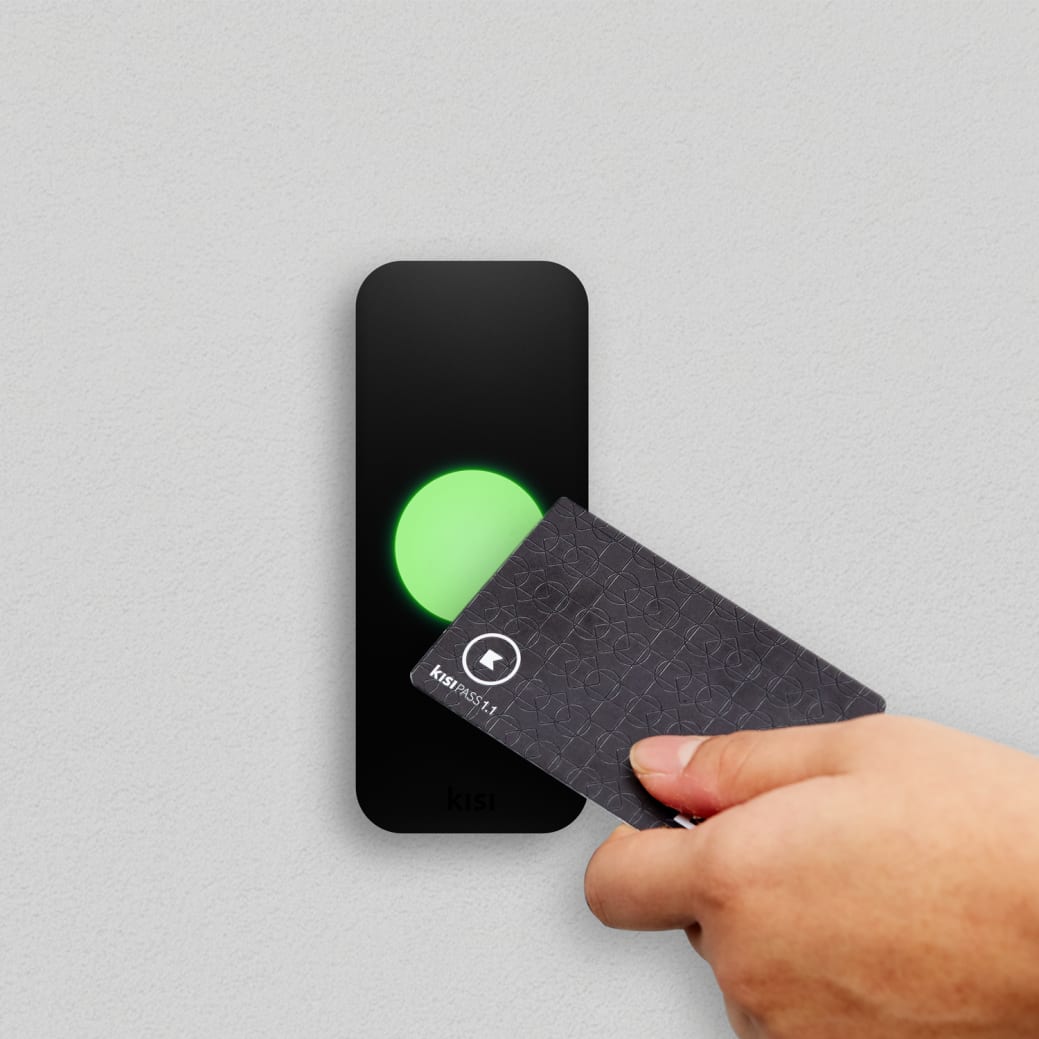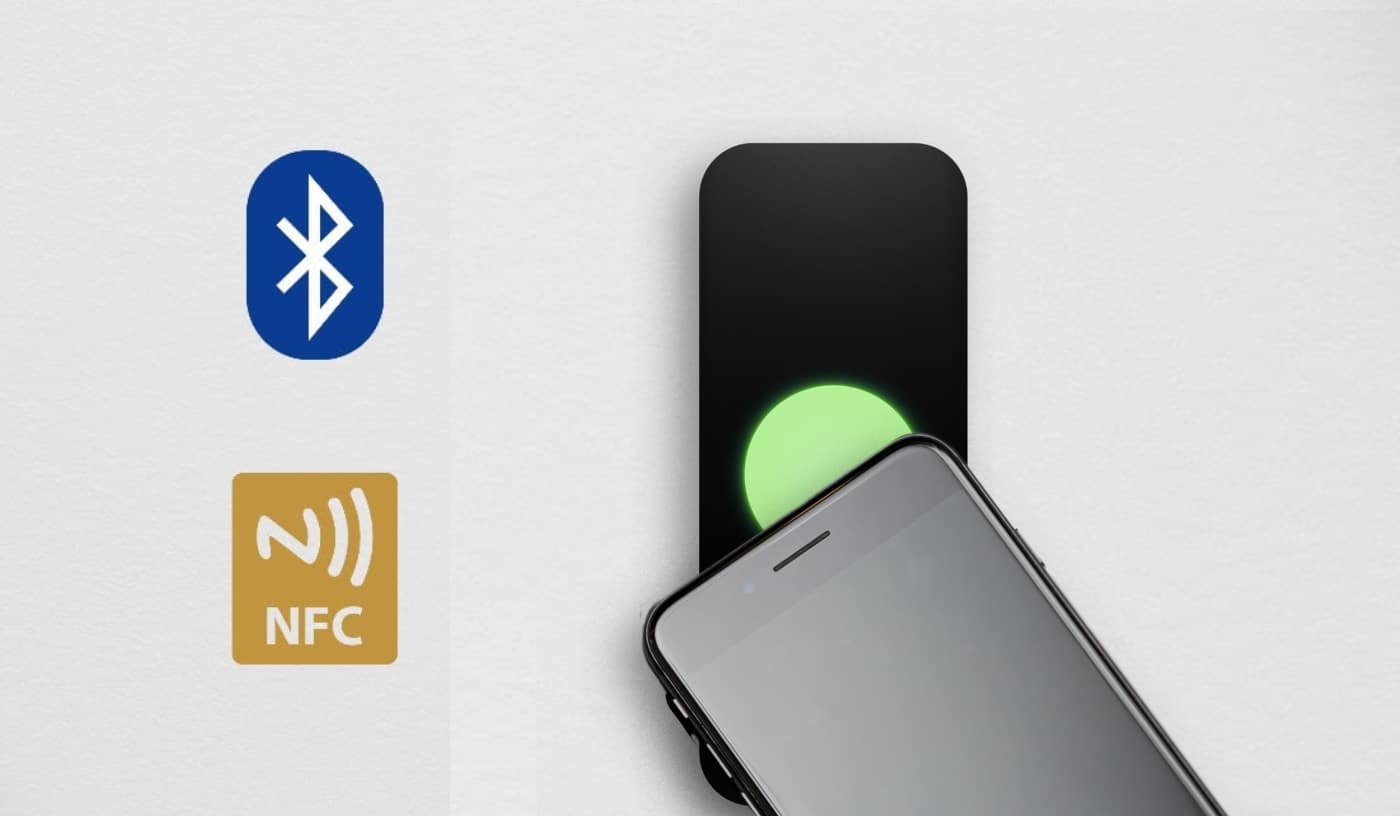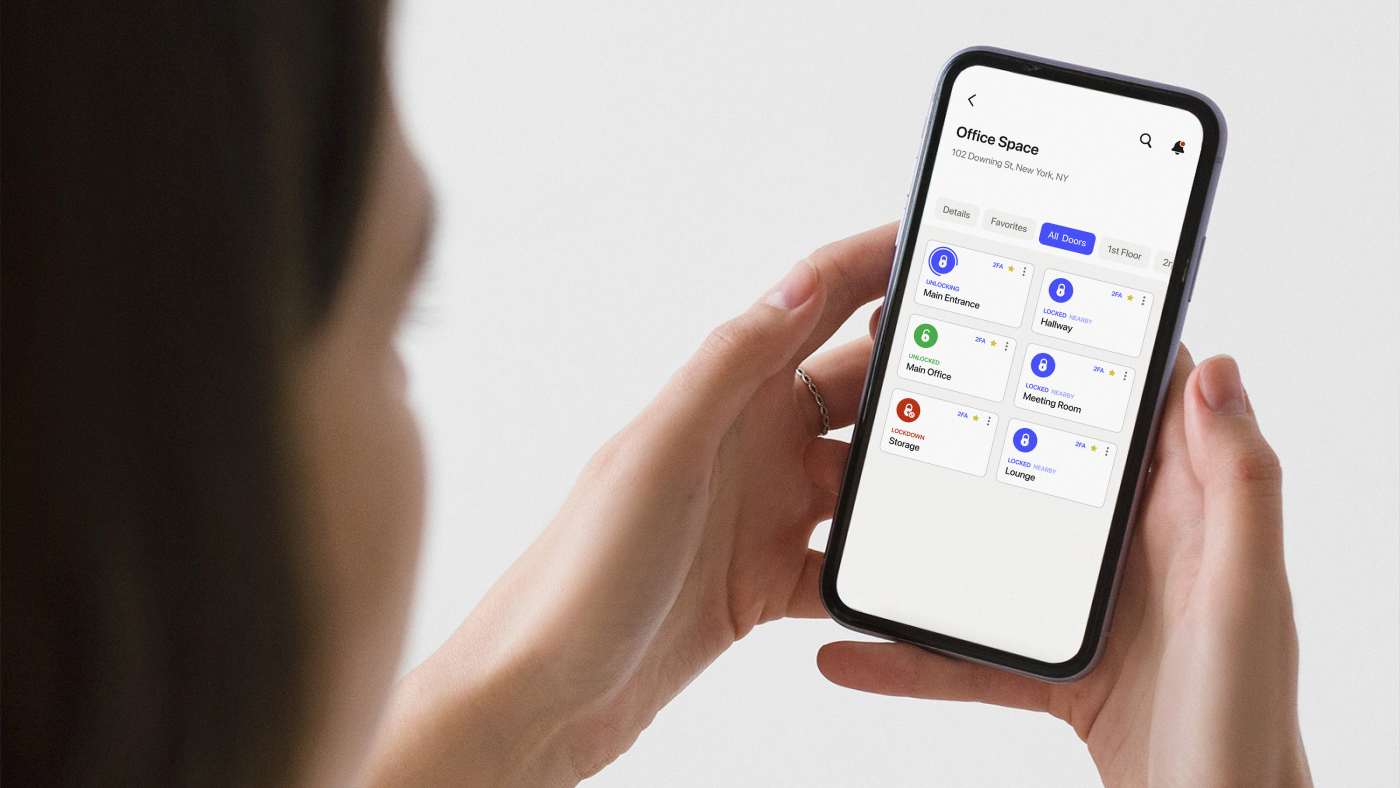Kisi’s market-leading access control solution enables multiple unlock methods, including smartphones, keycards, fobs, and NFC and RFID credentials. Kisi is compatible with NFC and RFID protocols and offers a mixed-use access solution depending on time or user. Learn more about Kisi’s different access methods and the benefits of Kisi access control.
There are many decisions to be made when it comes to deploying an access control system for your business. You’ll need to decide which entry points to secure, how to secure them, how to integrate with security systems, how to determine access permissions, and how to manage everything.
Certain technologies come into play when deciding how to secure your entry points. RFID (Radio Frequency Identification) and NFC (Near Field Communication) are commonly used in access control systems to authenticate and grant or restrict access to individuals. While they both rely on wireless communication, there are some key differences between them.
RFID access control #
RFID stands for Radio Frequency Identification. RFID technology uses electromagnetic waves to capture and read transmitted data. An RFID system consists of RFID readers and RFID tags or cards.
- RFID tags/cards: These can be in the form of key fobs, cards, or even implanted microchips.
- RFID readers: These devices emit radio waves to communicate with the tags/cards. They can be fixed at entry points or integrated into handheld devices.
In the case of access control, RFID tags hold the credential information that, when placed near a compatible reader, will transmit the info to unlock the door.
RFID can be either active, where it has its own power source and a high range, or passive, which means it is powered by a reader and works at shorter distances. These tags can be detected from several feet away by the receiver, making them especially useful for access control in buildings with a high number of cardholders.
RFID access control: System overview #
RFID is a popular solution for indoor access control systems. RFID access control systems are widely used in various industries and are known for their reliability and durability.
In commercial access control systems, RFID-enabled tags are usually attached to employees' ID cards, or they are given unique access cards for their office. This provides a simple way for any company to deploy an access control solution that allows for unique credentials.
The RFID applications for personnel identification typically operate at quite a low frequency, almost 140 kHz, for badge detection. The information of a cardholder, object, or reader is electronically stored in the RFID cards or tags, which can contain small pieces of information such as identification numbers, prices, or codes.
Door readers use this same technology. Each RFID reader is equipped with a small antenna, which sends its own radio waves to detect any RFID tag or card within its range.
This range can vary for each reader depending upon the frequency of the radio waves it emits, anywhere from about 10 centimeters (~4") to around one meter (~1'). The RFID reader decodes the info from the RFID tag and sends the signal to its host software, which either grants or denies access to the user.

RFID software for access control #
The access control software does all the heavy lifting by managing access approvals. Signals are received from each RFID reader, enabling readers to accept and deny requests to access certain facilities based on access levels or specific permissions.
Access panels, which are the parent devices that control card readers and manage access requests, allow for easy integration with RFID readers. Access control panel hardware is needed to open the lock or door, which only happens with approved access requests.
RFID technology is widely used in today’s market. Because of this, readers that accept RFID credentials often work with RFID-enabled cards from many manufacturers. Trusted manufacturers of ultra-high frequency (UHF) RFID devices include Motorola, Impinj, Mojix, and Alien Technology.
Benefits of RFID access control #
RFID chips are a very durable product, especially when compared to old barcode-based access methods. This means less time and money will have to be spent on replacement cards as a result of regular wear and tear.
RFID tags can also function in almost any kind of weather, which is especially helpful for outdoor readers exposed to rain, snow, and extreme temperatures. Also, because of their popularity, RFID tags are an extremely reliable format for security and compatibility purposes.
Drawbacks of RFID access control #
Although it has many benefits, RFID isn't a completely perfect access control solution.
There are distinct security issues with RFID cards, as any technology that can create a signal has the potential to be hacked.
For example, there is a possibility that someone with an RFID reader could access the information embedded on each card. An RFID tag doesn't choose when it's actively transmitting the electronic data it holds, and it can't discern between a legitimate and an illegitimate reader.
Additionally, RFID cards are prone to electromagnetic interference, which can come from other RFID cards or any other magnetized device. This means that they can easily be jammed or lose their ability to transmit information.
These cards are also easily cloned if their information is stolen. For example, if someone has a handheld device that can read the broadcast signals, they can clone this information to a new card using a transponder.
NFC access control #
Near field communication (NFC) technology is an evolution based on RFID that has many similarities and a few key differences. It enables data exchange between two NFC-enabled devices when they are brought close together.
- NFC tags/cards: Similar to RFID, NFC tags/cards contain an embedded microchip and antenna. They are commonly found in smartphones, access cards, or wearable devices.
- NFC readers: NFC readers are integrated into devices like smartphones, tablets, or dedicated NFC readers.
NFC smart tags are synonymous with smartphones, which act as receivers and transmitters of data. Unlike RFID, NFC works only in extremely close proximity, at a maximum of about 4 cm (1.57 in). NFC technology is used in numerous applications, especially in cloud access control, physical access control, system security, and property security.
Bring your own credentials with NFC #
NFC access control is used to simplify the concept of badges, keys, or fobs. The fundamental principle of NFC technology in all applications remains the same as RFID: To allow data to be transmitted securely over short distances. Similarly to RFID, a smart card can also be used to send information to NFC-enabled devices, such as tablets, mobile phones, and laptops, or allow them to access cloud-based networks and system resources over the internet.
Cutting-edge NFC door access control systems are managed through apps installed on smartphones, which act as the key or credential for an NFC-equipped reader.
When the mobile device is held near the NFC reader, a communication channel is established and data transactions take place, authenticating the permissions of the user to access the secured area, resources, or applications. If you’ve used Apple Pay, you’ve used NFC.
NFC access control: System overview #
In most cases, NFC technology employs one reader and a card or phone. The card will be coded with the tag data, which contains the credential information that allows a connected access panel to identify the user within its system and authorize or deny access to the cardholder.
How NFC door readers work #
NFC door readers are used for secure access control systems that allow authorized individuals to gain entry to a building or specific areas within it. When an NFC tag or card is held near an NFC reader, it reads the information and verifies the person’s identity within the connected software. This communication is not only limited to authentication, however.
NFC access control can also record detailed access information, including:
- Precise access time
- Specific access point used
- Length of time access was granted
In NFC access control systems, the smart card data is transmitted over the internet to a centralized location within your system to grant access to the necessary cloud computing resources or protected locations.
There are many different types of readers, all of which are extensively used in different access control applications. Among those models, IP-based access control readers are some of the most popular, secure, and reliable access control devices available on the market. These readers can also be easily integrated into an existing IT network.

NFC software in physical security #
Modern access control software is able to record and organize the information transmitted via NFC to create more insightful access control logs.
NFC door access relays the information mentioned before, including time, any user information, and the length of the event. All of this information can be compiled and organized to create informative reports that improve security and streamline audits.
Benefits of NFC access control #
NFC shares many of the benefits of RFID, with key differences that make it ideal from a usability and security standpoint. The reduced activation range makes duping or hacking credentials much more difficult, and the ability to use your smartphone as your access key is great from a user perspective.
NFC smartphone credentials #
The availability of smartphone-based NFC credentials cuts down on the overhead costs of activating and maintaining an access control solution. Instead of provisioning new keycards for every new hire and old or lost cards, users can simply bring their own device to use as a credential.
Smartphone credentials increase your security posture as well. Smartphones require some version of an unlock or authentication to occur before they will activate NFC data transmission. Where RFID can be triggered remotely by a reader, NFC data transfers must be prompted device-side.
Simplify door access deployment with NFC #
Because NFC technology is so ubiquitous and has low-maintenance energy requirements, it's the perfect medium for incorporating cloud-based access control on a large scale without redesigning and re-configuring an entire location. This key feature saves administrators and building owners time, energy, and money in the long run, while minimizing the administrative resources needed to run an effective access control system. NFC also doesn't lose effectiveness due to signal or magnetic interference.
If you are thinking that NFC is clearly a better solution than RFID, it's important to remember that NFC cannot work for smart cards and readers that are more than a few inches apart.
If you run a busy, high-volume space, this can be a challenge when you just want to get as many people through the door as possible. In this case, RFID can be the preferable option.
To overcome such limits, Kisi offers features like remote unlocks and scheduled unlocks, which allow admins to grant or revoke access in situations where the usual NFC reader authentication would be inefficient.

Wrapping Up #
While there is no right or wrong answer to the RFID vs NFC debate, any space with an access control system could easily benefit from either RFID or NFC.
Choosing the best option can be difficult, but it’s imperative that you consider all of the benefits and drawbacks in the context of your organization’s needs. Whether you care about security, ease of use, or accessibility, choosing between RFID and NFC access control systems is hard, but necessary.
Kisi has tapped into and optimized NFC technology for Android smartphones (and the corresponding Bluetooth features used in iPhones), eliminating the need for physical keys and streamlining the administrative processes associated with granting multiple people access to a location.
In a classic "best of both worlds" scenario, Kisi is also compatible with RFID protocols, letting you choose the option that works best for you now with the possibility to change later. Or you can even have a mixed-use solution depending on time or user.
If you need help deciding which access control system is best for your business, Kisi is here to help. Our team of security experts has helped thousands of companies worldwide choose and implement cloud-based access control. They will suggest what access control products you'll need based on the number of doors you want secured and your current access control setup (if any). After the complimentary consultation, our team can give you a quote based on your access control needs.

